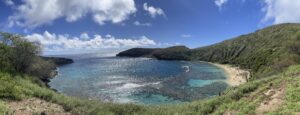A unique database was created that describes the methods used to allocate shares in nearly every major catch share fishery in the world. Approximately 54% of the major catch share fisheries in the world allocated the Total Allowable Catch (TAC) solely on the basis of historical catch records, 3% used auctions, and 6% used equal sharing rules. The remaining 37% used a combination of methods, including vessel-based rules. These results confirm the widely-held belief that nearly all catch share programs have “grandfathered” private access to fishery resources: 91% of the fisheries in the database allocated some fraction of the TAC on the basis of historical catch. This publicly available database should be a useful reference tool for policymakers, academics, and others interested in catch shares management in Hawai‘i and across the globe.
To suggest edits or additions to the database, please email lynham@hawaii.edu.





